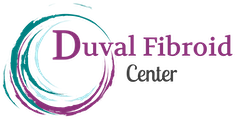Time heals all wounds. But does it heal all of our medical conditions?
For some, the answer is a resounding “yes.” Some medical conditions do, in fact, abate merely with time and rest. But when it comes to uterine fibroids, time, rest, and age alone do not necessarily make for an end-all-be-all combination to a woman’s abdominal woes.
And with 20% to 80% of adult women developing uterine fibroids by the time they reach the age of 50, what should they know for when they enter menopause and, subsequently, exceed 50 years of age?
What Happens To Uterine Fibroids/Symptoms After I Enter Menopause?
Statistically, it is women who are in their childbearing years (typically ages 20 through 40) who are most at-risk for developing uterine fibroids. This is because uterine fibroids thrive off of the hormones a woman’s body produces in the peak of her fertility.
“Estrogen and progesterone, two hormones that stimulate [the] development of the uterine lining during each menstrual cycle in preparation for pregnancy, appear to promote the growth of fibroids,” The Fibroid Foundation explains. “Fibroids contain more estrogen and progesterone receptors than normal uterine muscle cells do.”
That being said, when a woman enters menopause, her body will typically produce estrogen at a reduced rate, essentially cutting off one of the uterine fibroid’s primary sources of nourishment and causing it to shrink.
Thus, studies indicate that the “natural regression” of uterine fibroids — and subsequently their symptoms — begins in menopause.
Why Do I Still Have Uterine Fibroids After Menopause?
While many women find relief from their uterine fibroids upon the onset of menopause, this is not necessarily a universal experience, particularly for women who receive hormone replacement therapy as a medical treatment during their peri- or post-menopausal years.
“Women who are taking hormone replacement therapy (HRT) during perimenopause or after menopause may not see a decrease in their symptoms,” according to Medical News Today. “This is because HRT usually contains a combination of estrogen and progesterone, which are the same hormones that allow fibroids to grow in younger women.”
Further, The North American Menopause Society has published a study explaining that, for many women who continue to experience the effects of uterine fibroids after menopause, symptoms will often manifest as abnormal uterine bleeding, or AUB.
AUB reportedly represents approximately 70% of all gynecological consultations sought by both perimenopausal and postmenopausal women.
What Do I Do If I Continue To Experience Uterine Fibroids/Symptoms Post-Menopause?
Regardless of whether you have just entered menopause or if it is still some years down the road for you, it is important to understand that you always have treatment options.
Uterine fibroid embolization (UFE), for example, is a leading non-surgical and minimally-invasive treatment for uterine fibroids.
In fact, UFE has a patient satisfaction rate over 90% because it:
- Is clinically proven to be safer than myomectomy or hysterectomy
- Requires no general anesthesia
- Requires no surgical incisions
- And features a high clinical success rate
At the end of the day, quality medical treatment will provide the relief you have long sought for your uterine fibroids.
If you have further questions or are ready to embark on the journey to restored uterine comfort, the next step is easy: simply contact Duval Fibroid Center today by calling (904) 423-6017 to schedule your consultation!

